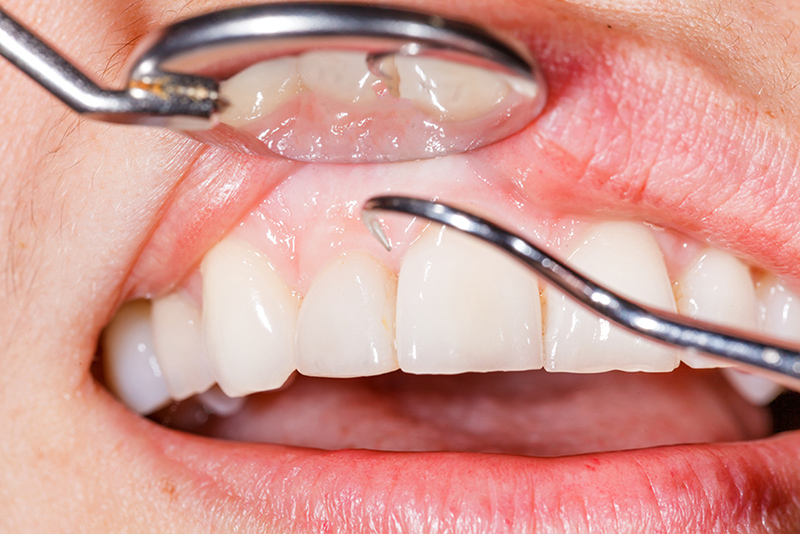
Periodontal Therapy Near You
Periodontal Disease is also known as gum disease, an oral health condition that results from poor gum hygiene, inflammation, and a buildup of plaque and tartar. Since this is an issue that is progressive in nature, it’s important to visit a dentist and begin treatment when you can, to get your smile back to being fully healthy once again.
Our local dental practice provides periodontal therapy near you. Call our staff today to learn more.

What Can Cause Gum Disease?
The number one factor in the development of gum disease is the combination of bacteria, plaque, and tartar in your mouth. But other factors can worsen the disease and symptoms as well including the following:
- Lack of a daily oral health regimen leaving an unhealthy bacteria biofilm in your mouth.
- A history of gum disease in your family.
- Smoking, chewing tobacco, or cannabis use.
- Taking certain medications. This many drugs decrease your protective saliva production while others can cause changes in your gums, making it more difficult to clean your teeth.
- Other illnesses like diabetes or cancer.
- Hormone changes. This is most prominent during puberty, menopause, and during months of pregnancy.
- Stress.
- Poor nutrition.
At Glamorgan Dental, we do a thorough, multi factor assessment and approach to care that is tailored to your specific risks and needs
Symptoms
Generally, gum disease may progress quite gradually, which means that a lot of people don’t even know that this problem is negatively affect their teeth until much later. However, there are some noteworthy symptoms to keep an eye out for. And, if you are experiencing them, reach out to your dentist near you; they’ll be able to get you started with dental hygiene therapy in Calgary.
- Bleeding gums when you brush, floss, or eat.
- Swollen/red/irritated gums.
These first two symptoms are indicative of gingivitis, the beginning stage of the disease. With proper care and management, this is often reversible.
- Your gums have started to recede.
- Your teeth feel loose.
- Alterations to your bite pattern.
- If you wear dentures, they’re not fitting as well as they used to.
- Bad breath or a bad taste in your mouth.
Keep in mind that gum disease doesn’t necessarily influence all your teeth; it may only be affecting a few of them.
Treatment
Effective treatment starts with a careful assessment of your gum health including x-rays, a gum health screening, measurements, and a review of your medical history and home care routine. Once your gum condition has been determined, our experienced hygiene team will review any recommended therapies, treatments, or products that are appropriate to stabilize your periodontal (tartar) disease. This includes removal of any hard or soft (plaque) biofilm that is contributing to your gum condition. This is traditionally referred to as scaling or root planing. Depending on the amount of deposits and your level of gum disease, this may occur in one or two visits, or in a multi appointment phased approach. Rarely, you may need to be referred to a gum disease specialist. We use state of the art techniques that remove the biofilm bacteria as gently and thoroughly as possible. Although not usually necessary we do offer numbing options to keep this treatment as comfortable as possible. Ongoing maintenance every 3, 4, or 6 months will be recommended following active biofilm therapy

